As most of you know, we are in full out chicken mode right now with Gage’s business assets arriving (chicks) and with the webcam up and running (see link in the right hand column, click play), I thought this would be a perfect time to start an in-depth, hands-on study about chickens! I will even attempt to answer the proverbial question, “which came first, the chicken or the egg?”. Read to the bottom for that one 🙂 In the meantime, let’s get to some hands-on chicken anatomy lessons!
The first thing that I teach about chickens is the vocabulary. Most areas of study or professions have a certain vocabulary that is associated with that particular topic. Chickens are no exception. Some of the vocabulary will be very familiar, but some won’t be. I try to use the correct vocabulary for all the works in a particular area, so this is the first document to present to your students. I call it the Chicken Family Tree because so much of it surrounds the names of the chickens at different stages of their life.
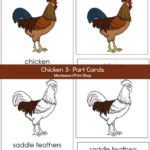 The next area I typically teach is the anatomy of a chicken. Montessori Print Shop has a beautiful set you can purchase. If you are not in a position to purchase them, here is another set of chicken anatomy that I found this is free. Unfortunately, I don’t remember where I got these, if you know who to give credit to, please let me know!
The next area I typically teach is the anatomy of a chicken. Montessori Print Shop has a beautiful set you can purchase. If you are not in a position to purchase them, here is another set of chicken anatomy that I found this is free. Unfortunately, I don’t remember where I got these, if you know who to give credit to, please let me know!
I know some people consider nomenclature (3 Part) cards to be just for young students, but I use them with my older boys all the time. If you are a visual learner (I am and two of my boys are), we like to see it… so we continue to use nomenclature cards even though they are 9, 11, and 13 (and I’m 47) now. It’s all about following the child to teach them the way they learn the best! Anatomy is the same across breeds but not across gender. So any set of chicken anatomy cards needs to distinguish if they are defining anatomy of a hen or a rooster. Here is a great chart of the differences between hens and roosters.
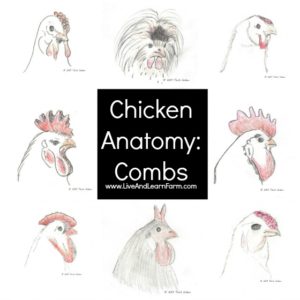 Did you know chickens can’t sweat? Since they do not sweat, they lose a primary way to cool their body down. Instead, chickens have combs and wattles to help them regulate their body temperature. But not all combs and wattles are created the same. I have created a Chicken Anatomy Combs work to show the reason for the differences and variations. The comb variations are usually based on breed and gender. The comb is not just a means to cool off, it is also used to attract a mate. In addition, when a young female chicken (called a pullet) is ready to start laying eggs, her comb will turn from pink to red.
Did you know chickens can’t sweat? Since they do not sweat, they lose a primary way to cool their body down. Instead, chickens have combs and wattles to help them regulate their body temperature. But not all combs and wattles are created the same. I have created a Chicken Anatomy Combs work to show the reason for the differences and variations. The comb variations are usually based on breed and gender. The comb is not just a means to cool off, it is also used to attract a mate. In addition, when a young female chicken (called a pullet) is ready to start laying eggs, her comb will turn from pink to red.
Since we are now discussing various chicken breeds, there is a great chart here to help your children see all the variations in each breed.
Now, back to the question about the chicken and the egg and which came first… if you believe in the Bible, it answers this question for us.
Gen 1:20 And God said, Let the waters bring forth abundantly the moving creature that hath life, and fowl that may fly above the earth in the open firmament of heaven.
Gen 1:21 And God created great whales, and every living creature that moveth, which the waters brought forth abundantly, after their kind, and every winged fowl after his kind: and God saw that it was good.
Gen 1:22 And God blessed them, saying, Be fruitful, and multiply, and fill the waters in the seas, and let fowl multiply in the earth.
Gen 1:23 And the evening and the morning were the fifth day.
Since I’m pretty sure there were not any eggs walking around, it would mean the chicken came first 🙂
I have so much more to cover regarding chickens, but this is a good place to stop for this study. I’ll be posting much more on chickens since it appears we will be spending much of our time with our new chicks. We recently received a request to host some homeschool field trip days, so we will be creating lots of works to teach our guests when these field trips start.
Until next time….
You may also like -
Trish Corlew
Latest posts by Trish Corlew (see all)
- 10 Fun and Educational Preschool Board Games - April 25, 2015
- March Menu Plan for Busy Homeschool Moms - March 10, 2015
- Middle and High School August LinkUp #24 - August 5, 2014
- Modeling Life-Long Learning - June 23, 2014
- The New Chapter – Day 1 with Free Printable - June 20, 2014
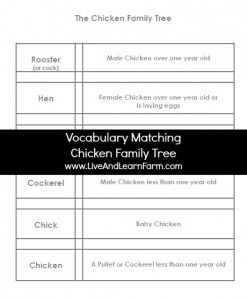

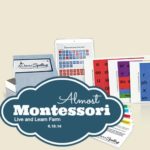
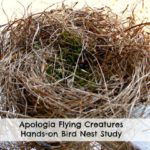

I am so pleased you are inviting home school groups to come out.
It will take several weeks before we have our routine down (and the garage cleaned out, LOL!)… but I am looking forward to having homeschoolers out! We plan for our farm to become a teaching facility, where we have camps during the summer for children to get to know a working farm! We can teach elementary botany and zoology. Won’t be able to do that this year… but hoping to do it next year! My children are so excited about that aspect! It is so Montessori for the olders to teach the youngers! The youngers already tend to look up to the older children, but it also reinforces the concepts with the olders and gives them an opportunity to be “project leaders”. They lead different areas based on what their skills are. It’s another “real world” experience for them… after all most of us take turns being leaders in our work environments based on the skills needed on a specific project. We are training them for their entry into the real world 🙂
Thank you so much for your encouragement! It means so much to me!!!
This is fabulous, Trish! Wish I had seen it when I first started out with chickens. Great resource for children!
Thanks Barbara!!!
This is really great, Trish. I like how you have tied in the Creator with your studies. Not to mention that someone has finally answered the proverbial question of which came first, the chicken or the egg!
Thank you Kathy! You are such a blessing to me! Love you!
Awesome :). I linked to your post.
Thank you Beth!!!
Thank-you for all your time and effort. This is a great little unit 🙂
Thanks Angel!
Great post. A friend recommended your blog. I will be back for sure!
I am giving away a set of Ball Canning blue pint jars on my blog right now, I hope you’ll stop by!
Lisa
Fresh Eggs Daily
http://www.fresh-eggs-daily.com/2013/04/giveaway-ball-heritage-collection-pint.html
Hey Lisa, thank you for dropping by to say hey! I appreciate your friend referring you to us! You have a beautiful blog!
Keep up the good work and give my best to Gage! Thanks for linking up with the Clever Chicks Blog Hop again this week!
Cheers,
Kathy Shea Mormino
The Chicken Chick
http://www.The-Chicken-Chick
Thanks Kathy!
Thank you for sharing these! I look forward to hopefully being able to make use of them someday soon!
Thank you for stopping by and leaving a comment Amy! I hope they will be a blessing to you and your family when you do get around to using them.